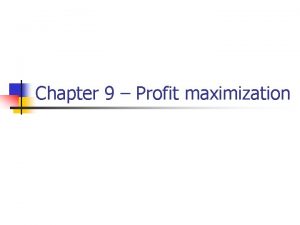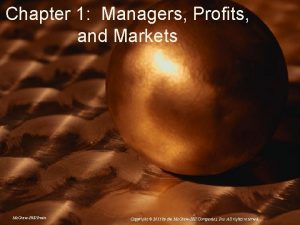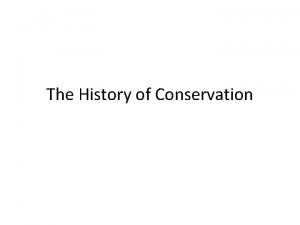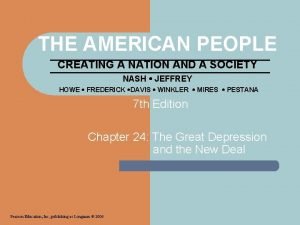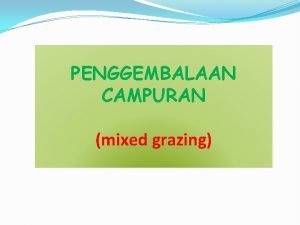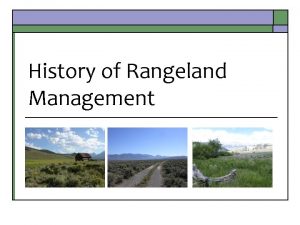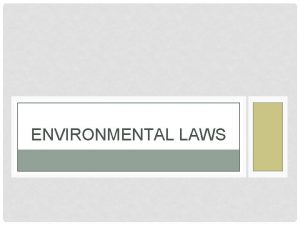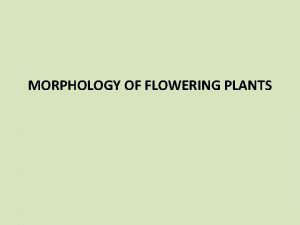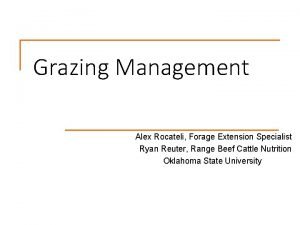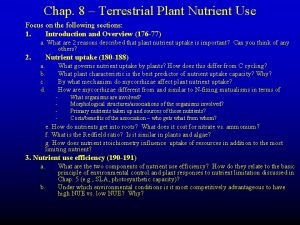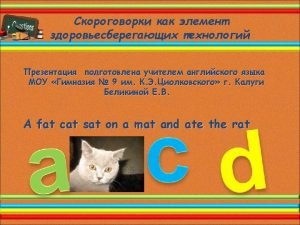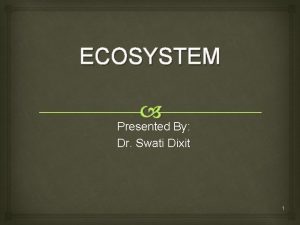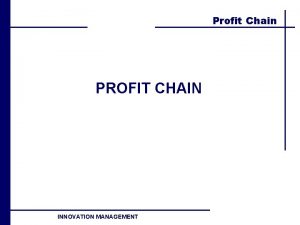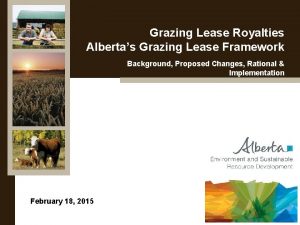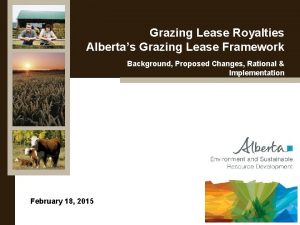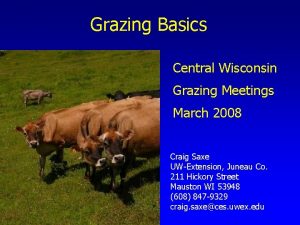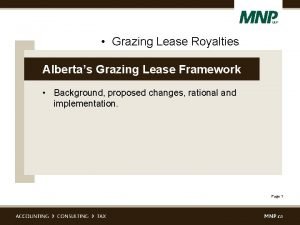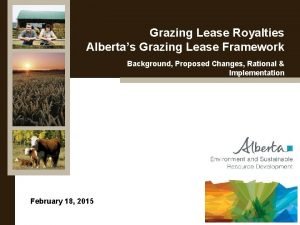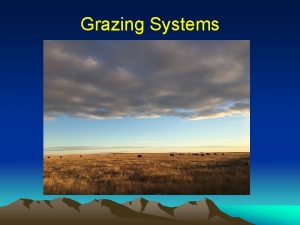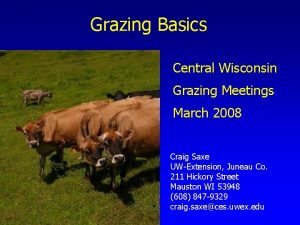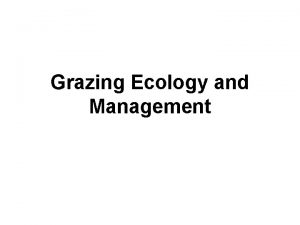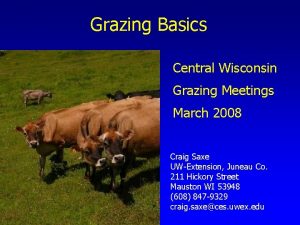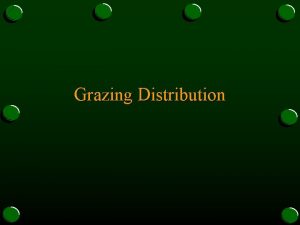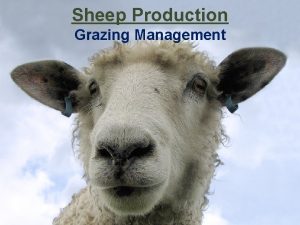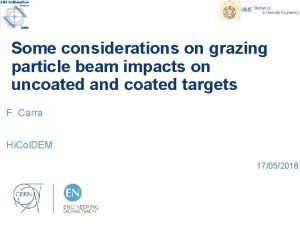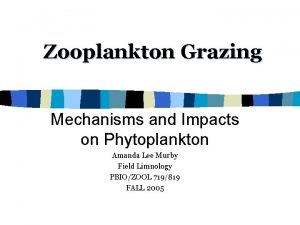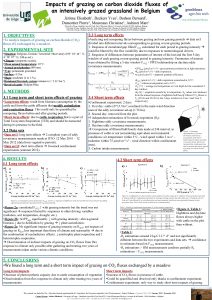GRAZING FOR PROFIT Consider the impacts of your










































- Slides: 42


GRAZING FOR PROFIT Consider the impacts of your decisions

Four Primary Process’s to Consider � � � Water Cycle Mineral Cycle Energy Flow Community Dynamics Resource Concerns � Soil � Water � Plant � Animal � Air � Human � Energy

Water Cycle

Mineral Cycle

Community dynamics is all species or populations living in an area Aggregate Stability

Energy Flow Through the Ecosystem Sun Heat Producers Heat Consumers Inorganic Minerals Decomposers Heat

Infiltration Runoff 3) Continuous Grazing 1) Pasture with 2) Rotational Longer Recovery Grazing Period

Rainfall Simulator Tilled w/ No-Till Residue 3” Grass 8” Grass

Manage Soil Temperature with Cover � 20 degree difference in area with cover of plant and residue versus tilled soil

When Soil Temperature Reaches (F degrees) : � � 140 130 Soil bacteria die, soil sterilization 100% of soil moisture is lost through evapo-transpiration 100 15% of moisture is used for growth 85% of moisture is lost 70 100% of soil moisture is used for growth

Soil Organic Matter and Available Water Capacity Inches of Water/One Foot of Soil Percent SOM 1 2 3 4 5 Sand 1. 0 1. 4 1. 7 2. 1 2. 5 Silt Loam 1. 9 2. 4 2. 9 3. 5 4. 0 Silty Clay Loam 1. 4 1. 8 2. 2 2. 6 3. 0 Berman Hudson Journal Soil and Water Conservation 49(2) 189 194 189 March April 1994 – Summarized by: Dr. Mark Liebig, ARS, Mandan, ND Hal Weiser, Soil Scientist, NRCS, Bismarck, ND

What Are The Benefits of Grazing Management? Producer Benefits � Increased production per acre- increased energy efficiency � Increased organic matter � More available water � Drought tolerance � Lower cost � Less hay needed � More cow comfort Society Benefits � Improved water quality- lower cost to purify water � Improved soil quality- cheaper than CRP and better soil � Reduced flooding � Less CO 2 emissions � Lower temperature of environment � More energy captured


Ending Height is very important!!!

Livestock- Grass- Sunlight- Microbe- Farmer

(NRCShttp: //soils. usda. gov/sqi/concepts/soil_biology/soil_food_web. html ) This chart has not included earthworms, snails, slugs, and other soil dwelling organisms.

Biomass of organisms above ground in the pasture and below ground within the pasture soil. Organisms Standing crop biomass lbs/a Above ground n n n 1200 Dairy cow 1 or 1200 Beef cow 2 Pasture 3 Total 587 450 2500 3018 Below ground n n n Pasture roots 4 2500 Bacteria 2052 Actinomycetes 2052 Fungi 6244 Algae 219 Protozoa 80 Nematodes 62 Mites 65 Collembola 65 Earthworms 624 Other fauna 40 Total 14003 Adapted in part from Brady and Weil 2002. 1. Cow producing 40 lbs milk/day 180 days/acre, 50% of forage standing crop consumed, 5 rotations/year. 2. Cow weaning 600 lb calf 3 acres/year. 3. Cool-season grass-clover pasture, 10 inches tall at grazing. 4. Roots equal top growth at grazing.

Reading the Land What’s the Grazing Prescription? � � � Recovery- Rest Disturbance- Impact Cover- Vegetative and/or Residue Fertility –Manure C: N Ratio 25: 1

Bale Grazing. Creep Grazing Hay � � Continue to get benefits of manure distribution outside of the growing season Creep Grazing allows growing animals more choice.

90 hay ring areas = 1 ac

ORCHARDGRASS GRAZING RESPONSE Dr. Ray Smith Laura Schwer Tom Keene

Methods Two similar orchardgrass plants were chosen from greenhouse. � Both were managed the same for 6 months: � �Clipped ~once per month �Supplied with good fertility (N, P, K) and water

Methods � Left plant simulates continuous grazing. � Initially clipped to a 1 inch height � Then clipped weekly for the next 4 weeks at a 1 inch height � Right plant simulates rotational grazing. � Initially clipped to a 3. 5 inch height � Then clipped again at 3. 5 inches four weeks later � Time lapse photography started at the beginning of the fifth week (day 29) for both plants.

Day 1 (24 hours after clipping) 1” Continuous 3. 5” Rotational

Day 2 1” Continuous 3. 5” Rotational

Day 3 1” Continuous 3. 5” Rotational

Day 4 1” Continuous 3. 5” Rotational

Day 5 1” Continuous 3. 5” Rotational

Day 6 1” Continuous 3. 5” Rotational

Seasonal grazing: Buying light weight stockers in December, Selling heavy weights in August

100 acre Pasture Farm 40 cows 14 day rotation, 102 tons hay 60, 000 40 cows 4 day rotation 20% bermuda, 13 tons hay Forage. . . Livestock-Forage Balance by Month Jun 200, 000 Forage. . . Livestock-Forage Balance by Month May Apr. May Jun Jul Aug Sep Oct Nov Dec Jan Oct Jul Mar Feb 100, 000 Sep 20, 000 Aug Nov Mar Dec 0 Jan Apr. May Jun Jul Aug Sep Oct Nov Dec Jan Feb Lb. of Forage Apr. Lb. of Forage 40, 000 Jun May Jul Apr. May Jul Jun Apr. May Jun Mar 80, 000 Jul Jun Jul Aug Sep Oct Nov Dec Jan Mar Feb Sep Aug 20, 000 Nov Mar Dec 0 Jan Apr. May Jun Jul Aug Sep Months Oct Nov Dec Jan 40 cows 4 day rotation, 30 tons hay Jan M Feb Dec Jan Feb M Aug Sep Oct Nov Dec Jan Feb Ma Forage. . . Livestock-Forage Balance by Jun May Month Jun Feb Mar 50, 000 Lb. of Forage May Dec Months Apr. Nov 100, 000 Forage. . . Livestock-Forage Balance by Month 40, 000 Oct 40 cows 4 day rotation 10% bermuda, 21 tons hay 40 cows 7 day rotation, 65 ton hay May Sep 0 Months 60, 000 Aug Apr. May Jun Jul Oct Aug Sep Oct Nov Dec Jan Nov Mar Feb Mar Dec 0 Jan Apr. May Jun Jul Feb Aug Sep Oct Nov Dec Jan Feb Mar Months 30 cows, 20 stockers and 30 Goats, 25 tons hay

Basic Steps to Improve Pastures � � Fertilize by soil test, hopefully most P and K provided by cycling nutrients through livestock Control weeds – hopefully out compete weeds or turn weeds into forbs by using high density short duration grazing or grazing multi-species livestock

Top Grazing Practices � � � Grazing Height Seeding Legumes High Density Short Duration Grazing Lime: P and K not N Fence � � Water Management Stockpiling tall fescue Multi-Species Grazing Timing: April 1, July 1 and Oct 1

Farm Considerations and Layout Corral as hub, fence for flow of livestock Determine “Acres per Paddock” for location of fence and water Topography ultimately determines location of Watering Facilities

BASIC PADDOCK LAYOUT 16 PADDOCK with 4 WATERING POINTS (funneling animals) Temporary fence Permanent fence Water point Permanent fence corral

Gate Arrangements 16’ gates 90 degree = 22. 5’ gate openings No post in center To layout stake with string in center where gates swing together

2 Gates Four fields if rotational grazed, bungy gates can be different widths

Trails commonly form between water source and feed area

Traditional Pond Potential Diseases � � � E-coli � Samonella � Coccidiosis � Leptospirosis � Foot rot Anthrax Brucellosis Erysipolis Other

Summary � � � Most Pastures need Recovery- Rest Disturbance- Impact a tool especially at beginning of growing season Cover- Vegetative and/or Residue most abused, how can you grow grass if you don’t capture energy Fertility –Manure management JUST DO IT!

Comments- Questions Ruminations?
 Normal profit economics
Normal profit economics Economic profit vs accounting profit
Economic profit vs accounting profit Post acquisition profit is which profit
Post acquisition profit is which profit Taylor grazing act 1934
Taylor grazing act 1934 Taylor grazing act 1934
Taylor grazing act 1934 Continuous grazing adalah
Continuous grazing adalah Taylor grazing act 1934
Taylor grazing act 1934 Food chain sequence
Food chain sequence Taylor grazing act 1934
Taylor grazing act 1934 Examples of small plants
Examples of small plants Navajo nation grazing permit laws
Navajo nation grazing permit laws Alex rocateli
Alex rocateli Grazing food chain
Grazing food chain Three grey geese tongue twister
Three grey geese tongue twister Concept of ecosystem
Concept of ecosystem Grazing food chain
Grazing food chain Natasha tried holding her breath
Natasha tried holding her breath What do you consider your greatest strengths and weaknesses
What do you consider your greatest strengths and weaknesses Give us your hungry your tired your poor
Give us your hungry your tired your poor Positive impacts of materials technology
Positive impacts of materials technology Materials technology positive impacts
Materials technology positive impacts Science and technology
Science and technology Fspos
Fspos Ecotourism advantages
Ecotourism advantages The social impact of ict
The social impact of ict When was the loom invented
When was the loom invented Impact of the gaa
Impact of the gaa Impacts of the haitian revolution
Impacts of the haitian revolution Minoxfen
Minoxfen Negative social impacts of tourism
Negative social impacts of tourism Positive impacts of tourism in scotland
Positive impacts of tourism in scotland Novell typiska drag
Novell typiska drag Tack för att ni lyssnade bild
Tack för att ni lyssnade bild Returpilarna
Returpilarna Varför kallas perioden 1918-1939 för mellankrigstiden?
Varför kallas perioden 1918-1939 för mellankrigstiden? En lathund för arbete med kontinuitetshantering
En lathund för arbete med kontinuitetshantering Adressändring ideell förening
Adressändring ideell förening Positive impacts of ict
Positive impacts of ict Inflation causes and effects
Inflation causes and effects Industrial revolution effects
Industrial revolution effects Long term impacts of the industrial revolution
Long term impacts of the industrial revolution Personlig tidbok för yrkesförare
Personlig tidbok för yrkesförare A gastrica
A gastrica
